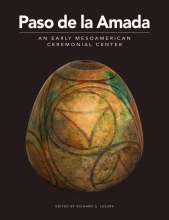Paso de la Amada, an archaeological site in the Soconusco region of the Pacific coast of Mexico, was among the earliest sedentary, ceramic-using villages of Mesoamerica. With an occupation that extended across 140 ha in 1600 BC, it was also one of the largest communities of its era. First settled around 1900 BC, the site was abandoned 600 years later during what appears to have been a period of local political turmoil. The decline of Paso de la Amada corresponded with a rupture in local traditions of material culture and local adoption of the Early Olmec style. Stylistically, the material culture of Paso de la Amada corresponds predominantly to the pre-Olmec Mokaya tradition.
Excavations at the site have revealed significant earthen constructions from as early as 1700 BC. Those include the earliest known Mesoamerican ball court and traces of a series of high-status residences. This monograph reports on large-scale excavations in Mounds 1, 12, and 32, as well as soundings in other locations. The volume covers all aspects of excavations and artifacts and includes three lengthy interpretive chapters dealing with the main research questions, which concern subsistence, social inequality, and the organizational history of the site.
